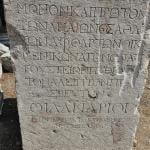 “…no prophecy of Scripture comes from someone’s own interpretation. For no prophecy was ever produced by the will of man, but men spoke from God as they were carried along by the Holy Spirit.” – 1 Peter 1:20-21
“…no prophecy of Scripture comes from someone’s own interpretation. For no prophecy was ever produced by the will of man, but men spoke from God as they were carried along by the Holy Spirit.” – 1 Peter 1:20-21
Many years ago, there was an eccentric movie called The Gods Must Be Crazy that became a bit of a hit. The setting for the movie was a remote African desert where an isolated tribal people lived quite happily and peaceably with no contact with the outside world. All of that changed one day when someone flying high overhead dropped a simple Coca-Cola bottle out of a plane, which fell to earth and was discovered by the tribe. This strange foreign object created quite a stir in the tribe as people argued what it was (tool, weapon of war, gift from the gods) and why it had come (to bring peace or conflict to the village). They had never seen a Coke bottle before and had no idea where it came from, what it was for, or how to use it.
The Bible is kind of like that Coke bottle that fell out of the sky. Ever since it showed up, there has been a big debate about where it came from, why it is here, and what we should do with it.
Perhaps you, or someone you know, has had the following questions: How did we get the Bible? Can we be sure that our Bible today is the same as what God inspired to be written? Here’s the fascinating story of how the Bible got from God to us.
Many volumes have been written to explain the miraculous and fascinating process necessary for the Bible’s existence. To summarize, I’ll explain the three-step process that has occurred for you to read the Bible:
Revelation
Transmission
Translation
The story of how the Bible got to us from God is a captivating one, and it begins with revelation.
Revelation
Revelation is the miraculous event whereby God revealed himself and his truth to someone and inspired them—through the power of the Holy Spirit—to perfectly write down what he had to say (2 Tim. 3:16; 2 Pet. 1:19–21). This original copy is called the autograph.
By comparing ancient manuscripts, we find that the vast majority of the variations between them are minor elements of spelling, grammar, and style, or accidental omissions or duplications of words or phrases. Overall, “…scholars can recover 97 to 99 percent of the original content of the New Testament with certainty.”1
Remarkably, the Scripture quoted in the works of the early Christian writers (mostly AD 95–150) are so extensive that virtually the entire New Testament (except for eleven verses) can be reconstructed from quotations alone (mostly from 2 and 3 John).
Critics of the Bible’s accuracy routinely claim that a lack of manuscripts prove that the Bible is a series of fables and legends that have developed over hundreds of years. A simple shepherd boy dealt a serious blow to their criticisms in 1947.
This boy wandered into a cave in the Middle East and discovered large pottery jars filled with leather scrolls that had been wrapped in linen cloth. Amazingly, the ancient copies of the books of the Bible were in good condition because they had been well sealed. What are now known as the Dead Sea Scrolls are made up of some forty thousand inscribed ancient fragments. From these fragments, more than five hundred books have been reconstructed, including some Old Testament books such as a complete copy of Isaiah.
Transmission
The next step in how we got our Bible is transmission. Transmission occurred when trained scribes carefully hand copied the manuscript so that other copies could be made available for people to read.
While these handwritten copies have the occasional minor error in punctuation or spelling (called variants) they were accepted as accurate and authoritative by God’s people (e.g., Deut. 17:18; cf. 1 Kings 2:3; Ezra 7:14; Neh. 8:8).
For example, the apostles, who were the senior leaders in the early church, taught from copies of the books of the Bible (Acts 17:2; 18:8), and the early church tested all teachings against the existing copied scrolls (Acts 17:11). Furthermore, Jesus himself taught from copies of the books, not the autographs, and treated them as authoritative (e.g., Matt. 12:3–5; 21:16, 42; Luke 4:16–21; 10:26). Quoting manuscripts in His day, Jesus said in Matthew 4:4, “It is written…” God’s people, along with their God, Jesus, have always relied on manuscripts, and these writings have proven to be accurate and trustworthy.
Tragically, opponents of Scripture have attacked its trustworthiness by falsely stating that our current English translations are built upon poorly transmitted copies. However, the bibliographical test of Scripture flatly refutes this false argument. This test determines the historicity of an ancient text by analyzing the quantity and quality of copied manuscripts, as well as how far removed they are from the time of the originals. In the next devotional we will examine this fact in greater detail.
The quantity of New Testament manuscripts is unparalleled in ancient literature. There are about 5,800 Greek manuscripts and about 15,000 manuscripts in other languages.
As the following chart illustrates, both the number of transmitted manuscripts we possess of Scripture and their proximity in date to the autographs are unparalleled when compared to other ancient documents.
| Author | Work | Date Written | Earliest MSS | Time Gap | Manuscripts |
|---|---|---|---|---|---|
| Homer | Iliad | 800 BC | c. 400 BC | 400 | 1,757 |
| Herodotus | History | 480-425 BC | 10th C | 1,350 | 109 |
| Sophocles | Plays | 496-406 BC | 3rd C BC | 100-200 | 193 |
| Plato | Tetralogies | 400 BC | 895 | 1,300 | 210 |
| Caeser | Gallic Wars | 100-44 BC | 9th C | 950 | 251 |
| Livy | History of Rome | 59 BC-AD 17 | Early 5th C | 400 | 150 |
| Tacitus | Annals | AD 100 | 1st half: 850, 2nd: 1050 (AD 1100) | 750-950 | 2+31 15th C |
| Pliny, the Elder | Natural History | AD 49-79 | 5th C fragment: 1; Rem. 14-15th C | 400 (750) | 200 |
| Thucydides | History | 460-400 BC | 3rd C BC (AD 900) | 200 (1,350) | 96 |
| Demosthenes | Speeches | 300 BC | Some fragments from 1 BC. (AD 1100) | 1,100+ (1400) | 340 |
| New Testament | AD 50-100 | AD 130 (or less) | 40 | 5,795 |
The scholar who conducted the research and posted this chart says:
“Although there has been an increase in the number of non-NT [New Testament] ancient manuscripts, nothing has changed regarding the applicability of the bibliographical test. Even Homer’s Iliad, which has seen the greatest manuscript increase, is still dwarfed by the NT, which has more than three times the Greek manuscripts as the Iliad. When one adds the fifteen thousand manuscripts in other languages, and then considers that almost the entire NT could be reproduced by the quotations of the early church fathers, one must maintain that, despite the increase of non-NT ancient manuscripts, the NT remains in a class by itself: it is by far the most attested ancient work.”2
Put simply, if someone seeks to eliminate the trustworthiness of the New Testament, they would also—for consistency’s sake—have to dismiss virtually the entire canon of Western literature and pull everything from Homer to Plato to Aristotle off bookstore shelves and out of classroom discussions. The transmission process of Scripture is unequaled.
1 Doug Powell, Holman QuickSource Guide to Christian Apologetics (Nashville, TN: Holman Reference, 2006), 161.
2 http://www.equip.org/article/the-bibliographical-test-updated/
Much of this blog is adapted from the book Doctrine written by Mark Driscoll and Dr. Gerry Breshears












